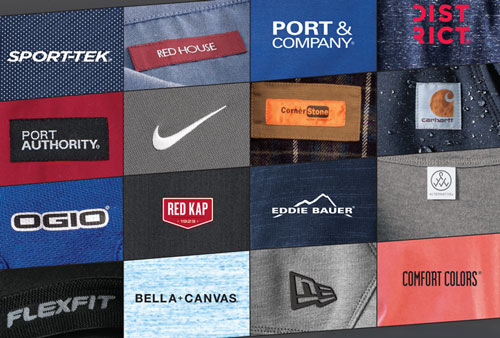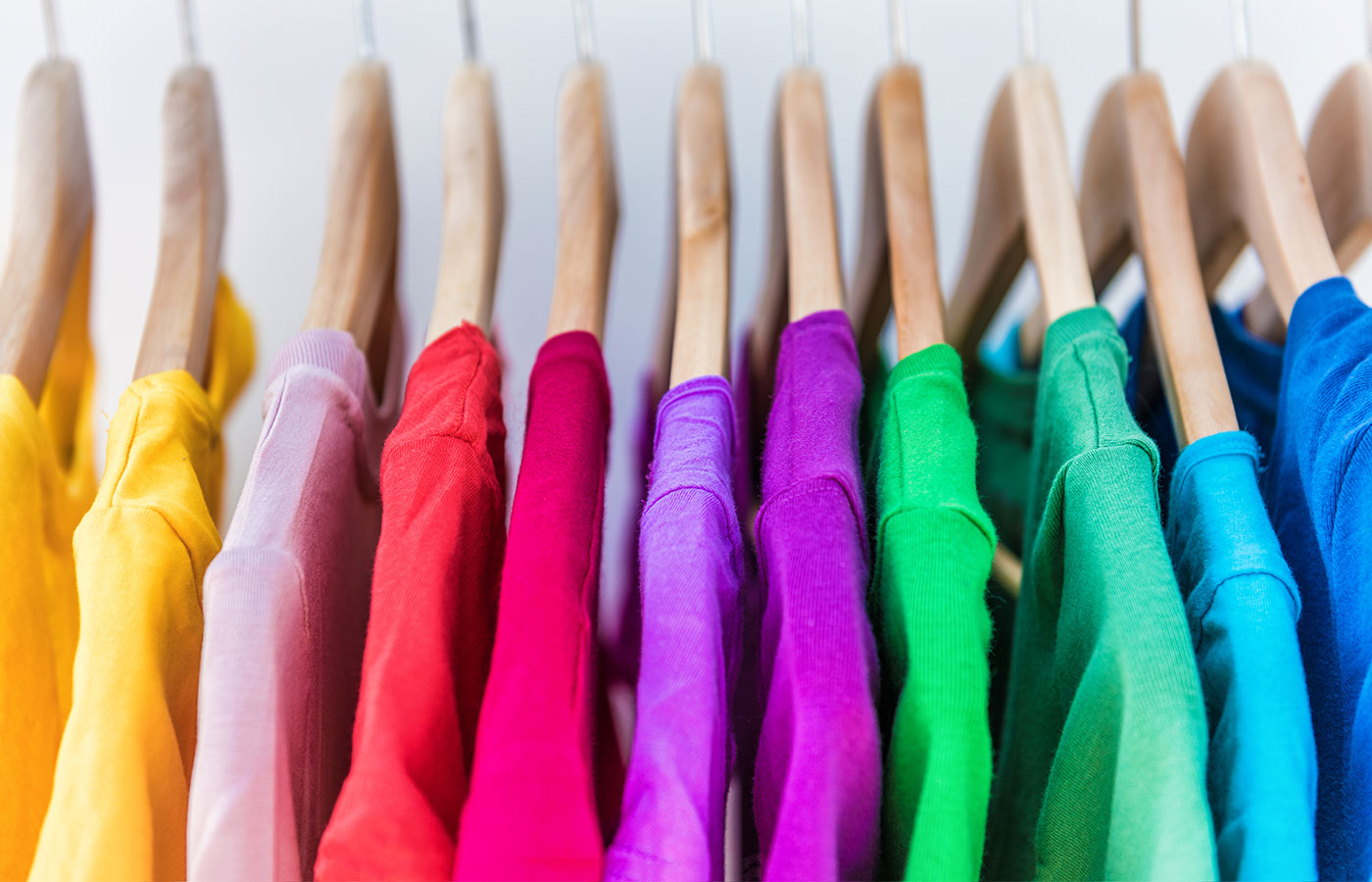Branded Clothing for Travel: Wrinkle-Resistant Fabrics That Perform
Branded Clothing for Travel: Wrinkle-Resistant Fabrics That Perform
Blog Article
Recognizing Clothing: The Value of Fabric Selections in Your Closet
The selection of textile in apparel plays a pivotal function in both aesthetic appeals and capability. Different materials offer varying levels of resilience, convenience, and breathability, directly affecting the wearer's experience. Understanding these nuances can boost one's wardrobe significantly. Several overlook just how these selections can influence not simply personal design, yet likewise sustainability. What material decisions could redefine your closet and align it with both style and duty?
The Function of Material in vogue and Capability

Typical Textile Kinds and Their Characteristics
When picking garments, understanding the attributes of usual textile types is crucial for making notified selections. Cotton, a widely-used all-natural fiber, is known for its versatility, breathability, and softness, making it appropriate for sportswear and everyday garments. Linen, one more natural alternative, flaunts excellent moisture-wicking buildings and a distinctive appearance, suitable for warm climates.Wool, usually favored for its heat and sturdiness, differs in fineness; merino wool is soft versus the skin, while coarser types are made use of for outerwear. Artificial textiles like polyester and nylon use sturdiness and resistance to wrinkles, making them popular for activewear and traveling garments. Lastly, blends, which incorporate synthetic and all-natural fibers, can boost capability while maintaining convenience. By acknowledging these fabric qualities, people can choose apparel that lines up with their way of life and aesthetic choices.
Breathability and Comfort: Selecting the Right Fabrics for Different Environments
Picking the ideal materials for different environments can considerably enhance comfort and general wearability. Breathable materials are necessary in warm climates, as they enable air flow and wetness dissipation. Fabrics such as cotton, bed linen, and moisture-wicking synthetics effectively attract sweat away from the body, maintaining the wearer cool and completely dry. On the other hand, in colder environments, thicker fabrics like wool or fleece give insulation while retaining breathability, ensuring warmth without overheating.Additionally, the selection of material weight plays an important role; lightweight fabrics are more effective for summer, whereas heavier choices are matched for winter wear. Recognizing the unique homes of each material allows individuals to dress appropriately for differing weather. Eventually, selecting comfortable and breathable fabrics tailored to certain climates can substantially improve everyday convenience and boost the total experience of wearing garments.
Toughness and Care: How Material Influences Durability of Your Wardrobe
Choosing the best products can substantially affect the toughness and care requirements of a closet. Fabrics such as cotton and polyester are recognized for their resilience and convenience of upkeep, making them perfect for everyday wear. In contrast, delicate materials like silk and shoelace call for more careful handling and specialized cleaning techniques, which can enhance the time and initiative required for care. Branded Clothing.Durability is additionally affected by the fabric's weave and finish; tightly woven materials tend to stand up to wear and tear better than loosely woven options. Furthermore, synthetic blends typically offer improved resilience, incorporating the best top qualities of numerous fibers.Understanding the treatment guidelines for every textile is vital, as inappropriate cleaning or drying out can bring about premature wear. Eventually, choosing durable products can bring about a longer-lasting closet, lowering the regularity of replacements and adding to an extra sustainable style choice
The Influence of Material on Fit and Shape

Lasting Fabric Choices: Making Eco-Friendly Choices
The impact of textile prolongs beyond fit and silhouette to incorporate environmental aspects, triggering an expanding interest in lasting textile selections. Environment-friendly materials, such as natural cotton, hemp, and Tencel, are gaining grip amongst customers that focus on sustainability in their closets. These materials are frequently created with fewer chemicals and water, lowering their ecological footprint.Additionally, recycled materials, made from post-consumer waste, supply a cutting-edge option to the textile industry's air pollution issue. Brands increasingly embrace transparency in their sourcing techniques, allowing consumers to make enlightened decisions concerning their purchases.Choosing sustainable textiles not just sustains honest practices yet also encourages the fashion sector to adopt even more responsible manufacturing approaches. As recognition of environmental issues rises, people are urged to assess the lasting impact of their textile selections, promoting an activity towards an extra environmentally conscious and lasting technique to fashion.
Boosting Style: Exactly How Textile Can Change an Outfit
While numerous might concentrate on shade and cut when selecting an outfit, the option of textile plays a crucial role in raising design and improving total appearance. Different products share distinct moods and messages; for example, silk exudes high-end and class, while denim provides an informal, loosened up vibe. The appearance and drape of a fabric can substantially change the silhouette, with structured textiles offering a polished appearance and softer ones producing a much more fluid, relaxed aesthetic.Moreover, the weight of the fabric affects wearability throughout periods. Lightweight textiles like linen and cotton are suitable for summer, while larger materials such as wool and velour offer warmth and sophistication in colder months. Understanding fabric residential or commercial properties, such as breathability and stretch, additionally encourages people to make enlightened choices that enhance convenience without compromising design. Inevitably, the right material can transform an outfit from common to amazing, making it an important consideration in top article any closet.
Regularly Asked Concerns
How Do I Identify the Material Content of My Clothing?
To identify material web content, one can take a look at care tags, conduct burn tests for fiber recognition, or speak with material examples. These approaches aid separate materials, guaranteeing educated selections for apparel treatment and upkeep in day-to-day wear.
Can Fabric Option Affect My Mood or Self-confidence?
Textile selection can substantially affect a person's state of mind and self-confidence. Branded Clothing. Specific products may evoke sensations of convenience or beauty, while others can feel restrictive or uncomplimentary, eventually influencing self-perception and emotional wellness throughout the day
What Fabrics Are Best for Delicate Skin?
For individuals with delicate skin, natural textiles like cotton, bed linen, and bamboo are frequently advised. These materials are breathable, hypoallergenic, and less most likely to trigger irritation, making them suitable options for convenience and skin health.
How Do I Properly Wash and Take Care Of Various Fabrics?
To correctly care and wash for different materials, one must think about each product's certain demands, consisting of temperature setups, detergents, and drying approaches, making certain durability and maintaining the fabric's original qualities for perfect usage.
Exist Details Fabrics for Athletic or Efficiency Use?
Sports or efficiency wear commonly uses fabrics such as polyester, spandex, and nylon. These products are created for moisture-wicking, breathability, and adaptability, enhancing motion and comfort during exercises while offering longevity and support. Conversely, in colder climates, thicker fabrics like woollen or fleece supply insulation while preserving breathability, ensuring heat without overheating.Additionally, the choice of fabric weight plays an important role; light-weight fabrics are preferable for summertime, whereas much heavier choices are fit for winter season wear. In comparison, delicate products like silk and lace require even more cautious handling and specialized cleaning methods, which can boost the time and effort needed for care.Durability is additionally influenced by the fabric's weave and coating; snugly woven materials have a tendency to withstand wear and tear far better than freely woven alternatives. In comparison, stiff fabrics can limit motion but supply a timeless, refined look.Moreover, the density and structure of the material can affect the aesthetic understanding of body form. The impact of fabric expands past fit and silhouette to include ecological factors, triggering a growing passion in sustainable material choices. The appearance and drape of a fabric can drastically change the silhouette, with structured textiles supplying a sleek appearance and softer ones producing a more fluid, relaxed aesthetic.Moreover, the weight of the textile influences wearability across periods.
Report this page